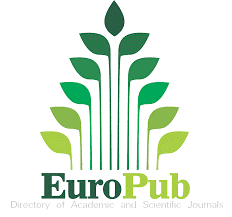Efecto de la introducción de especies forestales en suelos degradados en procesos de restauración ecológica en el sur del Ecuador
Resumen
El presente trabajo se realizó después de siete años de implementación de un ensayo de restauración ecológica en zonas intervenidas en áreas de amortiguamiento del Parque Nacional Podocarpus. Se evaluó cómo interfieren cinco especies forestales (tres nativas y dos introducidas) en tres estados de sucesión en suelos degradados. Adicionalmente, se indagaron las diferencias en las características fenotípicas, en biomasa microbiana y en la respiración basal del suelo entre especies nativas e introducidas; y finalmente se investigó la relación existente entre estos. Para comprobar estas hipótesis, se evaluaron variables fenotípicas de los árboles que intervienen directamente en la dinámica del suelo, a la vez se valoró la biomasa microbiana y la respiración basal como indicador biológico del suelo. Se observó que las especies forestales interfieren en la dinámica del suelo de forma diferente en cada una de las mismas, además se observaron diferencias significativas entre ellas en todos los parámetros fenotípicos e indicadores biológicos del suelo, sin diferenciarse si son nativos o introducidos. Se encontraron relaciones entre las características fisiológicas y los indicadores biológicos del suelo, diferenciándose en cada especie. Se concluyó que tanto la especie como el estado de sucesión influyen en el estado sanitario y fenotipo del árbol y a su vez en los indicadores biológicos del suelo.Citas
Abreu, Z., Llambí, L. D., y Sarmiento, L. (2008). Sensitivity of Soil Restoration Indicators during Paramo Succession in the High Tropical Andes: Chronosequence and Permanent Plot Approaches. Restoration Ecology, 1 - 10.
Acosta, Y., y Paolini, J. (2006). Dinámica de la biomasa microbiana (C y N) en un suelo de la Península de Paraguaná tratado con residuos organicos. Multiciencias, 180 - 187.
Aguirre, N. (2007). Silvicultural contributions to the reforestation with native species. Dissertation (p. 145). TU Munchen: Lehrstuhl fur Waldbau.
Bardgett, R., Mawdsley, J., Edwards, S., Hobbs, P., Rodwell, J., y Davies, W. (1999). Plant Species and Nitrogen Effects on soil biological properties of temperate upland grasslnds. Functional Ecology, 650 - 660.
Batten, K., Scow, K., y Espeland, E. (2008). Soil Microbial Community Associated with an Invasive Grass Differentially Impacts Native Plant Performance. Microbial ecology, 220 - 228.
Bezemer, M., Lawson, C., Hedlund, K., Edwards, A., Brook, A., Igual, J., van der Putten, W. (2006). Plant species and functional group effcts on abiotic and microbial soil properties ans plant soil responses in two grasslands. Journal of Ecology, 893 - 904.
Callaham, M., Rhoades, C., y Heneghan, L. (2008). A Striking Profile: Soil Ecological Knowledge in. Restoration Ecology, 604 - 607.
Cleveland, C., Townsend, A., Constance, B., Ley, R., y Schmidt, S. (2004). Soil Microbial Dynamics in Costa Rica: Seasonal and Biogeochemical Constraints. Biotropica, 184 - 195.
Departamento de Agricultura de los Estados Unidos (USDA), Servicio de Conservación de Recursos Naturales. (2014). Claves para la Taxonomía de Suelos. Decima segunda Edición. 1-5. https://www.nrcs.usda.gov/Internet/FSE_DOCUMENTS/nrcs142p2_051546.pdf
Ehrenfeld, J. (2003). Effects of Exotics Plant Invasions on Soil Nutrient Cycling Processes. Ecosystems, 503 - 523.
Eisenhauer, N., Bebler, H., Engels, C., Gleixner, G., Habekost, M., Milcu, A.. Scheu, S. (2010). Plant diversity effects on soli microorganisms support the singular hypothesis. Ecology, 485 - 496.
Fuentes-Ramírez, A., Pauchard, A., Cavieres, L. A., y García, R. A. (2011). Survival and growth of Acacia dealbata vs. native trees across an invasion front in south-central Chile. Forest Ecology and Management, 261(6), 1003-1009.
Garay, A. H., Sollenberger, L. E., McDonald, D. C., Ruegsegger, G. J., Kalmbacher, R. S., y Mislevy, P. (2004). Nitrogen fertilization and stocking rate affect stargrass pasture and cattle performance. Crop science, 44(4), 1348-1354.
Gann, G., y Lamb, D. (2006, enero). Society for ecological Restoration. Retrieved from www.ser.org.
Ganade, G., Miriti, M. N., Mazzochini, G. G., y Paz, C. P. (2011). Pioneer effects on exotic and native tree colonizers: Insights for Araucaria forest restoration. Basic and applied ecology, 12 (8), 733-742.
Gonzales, D. U., y Ordóñez, M. F. (2009). Evaluación de 8 especies forestales plantadas en tres estadíos de sucesión vegetal en la estación científica San Francisco, Provincia de Zamora Chinchipe. Loja: Tesis de Grado previa a la Obtención del Título de Ingeniero Forestal.
Gunter, S., González, P., Álvarez, G., Aguirre, N., Palomeque, X., Haubrich, F., y Weber, M. (2009). Determinants for successful reforestation of abandoned pastures in the Andes:. Forest Ecology and Management, 81 - 91.
Xiao, H., Li, Z., Dong, Y., Chang, X., Deng, L., Huang, J., ... y Liu, Q. (2017). Changes in microbial communities and respiration following the revegetation of eroded soil. Agriculture, Ecosystems y Environment, 246, 30-37.
IBM. (2008 ). SPSS Statistics 22 Core System.
James, B. (2006). Agriculture and Deforestation in the Tropics: A Critical Theoretical and Empirical Review. Springer, 9 - 16.
Luzuriaga, 2001. Curso de edafología general. Segunda edición. Ed. Politécnica – ESPE.
Kourtev, P., Ehrenfeld, J., y Haggblom, M. (2002). Exotic plant species alter the microbial community structure and function un the soil. Ecology, 3152 - 3166.
MAE. (2015, Marzo 22). Ministerio del Ambiente del Ecuador. Retrieved from www.ambiente.gob.ec
Meli, P., y Carrasco Carballido, V. (2011). Restauración ecológica de riberas, manual para la recuperación de la vegetación ribereña en arroyos de la Selva Lacandona (No. CH/333.715309727 M4).
Nath, C. D., Schroth, G., y Burslem, D. F. (2016). Why do farmers plant more exotic than native trees? A case study from the Western Ghats, India. Agriculture, Ecosystems y Environment, 230, 315-328.
Nearing, M. A., Xie, Y., Liu, B., y Ye, Y. (2017). Natural and anthropogenic rates of soil erosion. International Soil and Water Conservation Research.
Saetre, P. (1998). Decomposition, microbial community structure, and earthworm effects along a birch - spruce soil gradient. Ecology, 834 - 846.
Sax, D., Kinlan, B., y Smith, K. (2005). A Conceptual Framework for comparing species assemblages in native and exotics habitats. Wiley, 475 - 464.
Scheu, S. (1992). Automated measurement of the respiratory response of soil microcompartments: Active Microbial Biomass in Earthworm faeces. Soil Biol. Biochem, 1113 - 1118.
Schneider, M., Law, R., y Illian, J. (2006). Quantification of neighbourhood-dependent plant growth by Bayesian hierarchical modelling. British Ecological Society, 310 - 321.
Schweitzer, J., Bailey, J., Fischer, D., LeRoy, C., Lonsdorf, E., Whitham, T., y Hart, S. (2008). Plant - Soil - Microorganism interactions: heritable relationship between plant genotype and associated soil microorganisms. Ecology, 773 - 781.
Wolfe, B., y Klironomos, J. (2005). Breaking new ground: Soil Communities and exotic plant invasion. BioScience, 477 - 487.
Wen-De, Y. A. N., Xiao-Yong, C. H. E. N., Yuan-Ying, P. E. N. G., Fan, Z. H. U., Wei, Z. H. E. N., y ZHANG, X. Y. (2017). Response of Soil Respiration to Nitrogen Addition in Two Subtropical Forest Types. Pedosphere.
van Breugel, M., Ransijn, J., Craven, D., Bongers, F., y Hall, J. S. (2011). Estimating carbon stock in secondary forests: decisions and uncertainties associated with allometric biomass models. Forest Ecology and Management, 262(8), 1648-1657.
Yuste, C., Ma, S., y Baldocchi, D. (2010). Plant soil interactions and acclimation to temperature of microbial mediated soil respiration may affect predictions of soil CO2 efflux. Springer, 127 - 138.
Descargas
Publicado
Cómo citar
Número
Sección
Licencia
Derechos de autor 2018 Bosques Latitud Cero

Esta obra está bajo una licencia internacional Creative Commons Atribución-NoComercial-CompartirIgual 4.0.
Esta obra se publica bajo la licencia Creative Commons Atribución-NoComercial-CompartirIgual 4.0 Internacional (CC BY-NC-SA 4.0). Esto significa que los usuarios pueden copiar, distribuir y adaptar el contenido, siempre que se otorgue el crédito adecuado a los autores y a la revista. No se permite el uso comercial del material. Además, cualquier obra derivada debe distribuirse bajo la misma licencia. Esta licencia garantiza el acceso abierto al conocimiento, promoviendo la difusión y reutilización de los trabajos publicados sin fines de lucro, respetando la autoría y asegurando la libre circulación del contenido en términos equitativos.






























